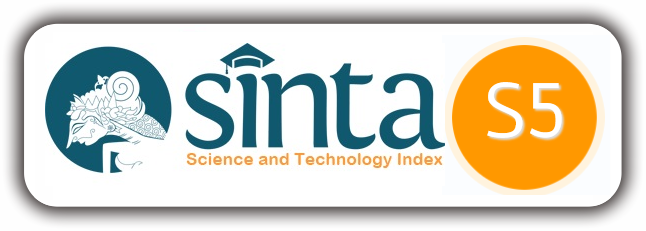Measurement of Ministry/Institution Budget Performance Efficiency Using Data Envelopment Analysis (DEA)
DOI:
https://doi.org/10.33827/akurasi2020.vol2.iss1.art57Keywords:
Data Envelopment Analysis, Eficiency, Evaluation of Budget PerformanceAbstract
Efficiency is one of the tools used by the Government to measure the success of an activity. Based on PMK Number 214/ PMK.02/2017 it is regulated regarding the measurement and Evaluation of Budget Performance for the implementation of Work Plans and Ministries/Institutions Budgets. To measure budget performance achievement based on aspects of implementation 4 (four) variables i.e. budget absorption, output achievements, efficiency, and consistency of budget absorption towards planning, are used. This study aims to measure the efficiency level of Ministries/Institutions budget performance using Data Envelopment Analysis (DEA). However, the variables used are not only based on measurement aspects of implementation according to PMK Number 214/PMK.02/2017 but also the number of satker (satuan Kerja). The approach used in the DEA model is Constant Return to Scale (CRS) model and Variable Return to Scale (VRS) model. This study uses the DEA model approach by comparing the results of the CRS model with VRS model. Based on DEA results, the number of Ministries/Institutions that have efficient scores is less than the number of Ministries/Institutions with inefficient scores. In addition, based on the value of slacks in each Ministries/Institutions, the variables that need to be improved are the coordination among satkers in when they are recording their performance achievements in the SMART application. Other variables that also require improvements are the ministry/agency’s willingness to revise their Disbursement Plan (RPD) after each budget revision and the speed at which they spend their budget once DIPA is stipulated.
References
BKF. (2012). Kajian Evaluasi Efektivitas dan Efisiensi Belanja K/L Tahun 2011: Belanja Infrastruktur. Diakses pada tanggal 3 September 2019, dari alamat website https://fiskal.kemenkeu.go.id/ dw-konten-view.asp
Charnes, A., W. W. Cooper, dan E. Rhodes. (1978). Measuring the Efficiency of Decision Making Units. European Journal of Operational Research, 2(6), 429–444
Farrel, M.J, (1957). The Measurement of Productive Efficiency. Journal of the Royal Statistical Society, 120(3), 253-290.
Fatimah, Siti, dan Umi Mahmudah. (2017). Data Envelopment Analysis (DEA):Pengukuran Efisiensi Kinerja Sekolah Dasar. Cakrawala Pendidikan.
Indrawati, Y., 2009. Analisis Efisiensi Bank Umum Di Indonesia Periode 2004-2007: Aplikasi Metode Data Envelopment Analysis. , pp.25–41
Instruksi Presiden Nomor 4 Tahun 2017 tentang Efisiensi Belanja Barang K/L Dalam Pelaksanaan Anggaran Pendapatan dan Belanja Negara Tahun Anggaran 2017.
Israwan,F, Bayu Surarso, dan Farikhin. (2016). Implementasi Model CCR Data Envelopment Analysis (DEA) Pada Pengukuran Efisiensi Keuangan Daerah. Jurnal Sistem Informasi Bisnis, Volume 1. Universitas Dipenogoro.
Kumbhakar CS. 2002. Specification and Estimation of Production Risk, Risk Preferences and Technical Efficiency. American Journal Agricultural Economic, 84(1):8-22
Lestari, Intan Sri. (2016). Efisiensi Bank Umum Syariah di Indonesia Menggunakan Metode Data Envelopment Analysis (DEA) (Studi pada Bank Mega Syariah, Bank Muamalat Indonesia, Bank BNI Syariah dan Bank Syariah Mandiri Tahun 2013-2014). Universitas Muhammadiyah Surakarta.
Lubis, Rianita Rizal. (2014). Analisis Efisiensi Teknis, Alokatif dan Ekonomi Produksi Nanas di Kabupaten Subang, Provinsi Jawa Barat. Institut Pertanian Bogor.
Muliawan, Yuliardi. (2017). Analisis Kebutuhan Pengaturan Billing Rate Oleh Menteri Kuangan. Jurnal Sistem Penganggaran , Volume 1. Ditjen Anggaran: Kemenkeu.
Peraturan Menteri Keuangan Nomor 208/PMK.02/2019 tentang Perubahan atas PMK Nomor 94/PMK.02/2017 tentang Petunjuk Penyusunan dan Penelaahan Rencana Kerja dan Anggaran K/L dan Pengesahan DIPA.
Peraturan Menteri Keuangan Nomor 214/PMK.02/2017 tentang Pengukuran dan Evaluasi Kinerja Anggaran Atas Pelaksanaan Rencana Kerja dan Anggaran Kementerian/ Lembaga (RKA-K/L).
Sajiah, F.S, dan Deri Saputra. (2019). Efisensi Belanja Kesehatan di Indonesia:Pendekatan Two Stage Network DEA. Jurnal Anggaran dan Keuangan Negara Indonesia, Volume 1. Ditjen Anggaran : Kemenkeu.
Undang – Undang Nomor 17 Tahun 2003 tentang Keuangan Negara.







